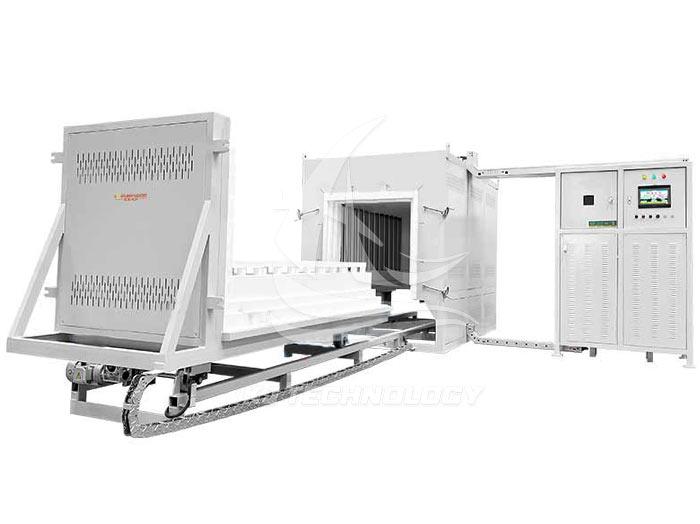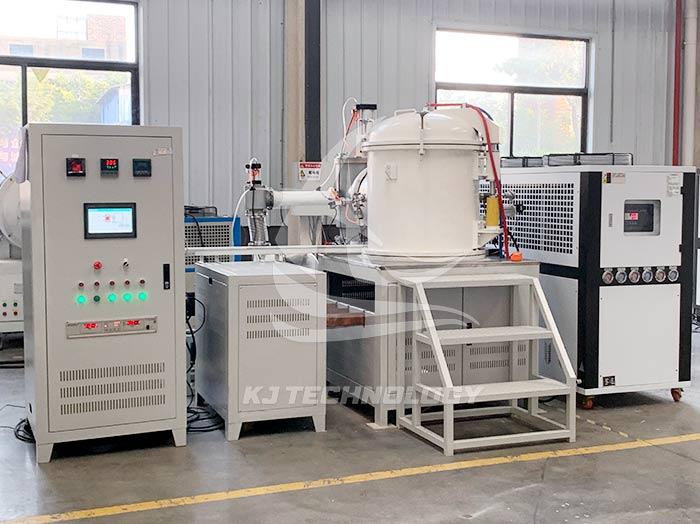What are the application areas of vertical vacuum hot pressing furnaces?
 09-18-2025 Author: KJ technology
09-18-2025 Author: KJ technology
The vertical vacuum hot press furnace plays a key role in multiple high-tech and precision manufacturing fields due to its unique vacuum environment and pressure heating function. The following is a detailed summary of its main application areas:
1. Manufacturing of hard alloy
Application scenarios: Production of hard alloy cutting tools, molds, mining tools, etc.
Advantages: Pressure sintering under vacuum or protective atmosphere can avoid alloy oxidation, improve material density and hardness, reduce porosity, enhance wear resistance and impact resistance.
Typical products: hard alloy blades, drill bits, milling cutters, wire drawing dies, etc.
2. Preparation of functional ceramics
Application scenarios: Manufacturing high-performance ceramic materials such as silicon nitride ceramics, aluminum oxide ceramics, silicon carbide ceramics, etc.
Advantages: The vacuum environment can prevent ceramics from oxidizing at high temperatures, and pressure sintering can promote particle bonding, improve material strength, toughness, and thermal stability.
Typical products: ceramic bearings, ceramic cutting tools, ceramic seals, electronic ceramic substrates, etc.
3. Powder metallurgy field
Application scenario: Production of high-density, high-performance metal powder metallurgy products.
Advantages: By pressure sintering, the density and mechanical properties of powder metallurgy materials can be significantly improved, approaching or reaching the performance level of forged materials.
Typical products: gears, bearings, structural components, magnetic materials, etc.
4. New energy manufacturing
Sintering of lithium battery electrodes:
Application scenario: Sintering process of positive and negative electrode materials for lithium batteries.
Advantages: Vacuum environment can prevent oxidation of electrode materials, and pressure sintering can improve electrode density and conductivity, thereby enhancing battery energy density and cycle life.
Annealing of photovoltaic silicon wafers:
Application scenario: Annealing treatment in the manufacturing process of photovoltaic silicon wafers.
Advantages: Annealing under vacuum or protective atmosphere can eliminate internal stress in silicon wafers, improve crystal quality, reduce defects, and enhance photovoltaic conversion efficiency.
5. Preparation of composite materials
Application scenarios: Manufacturing metal based composite materials, ceramic based composite materials, etc.
Advantages: Vacuum pressure sintering can promote interfacial bonding between different materials and improve the comprehensive properties of composite materials, such as strength, hardness, heat resistance, etc.
Typical products: metal ceramic cutting tools, carbon fiber reinforced ceramic composite materials, aluminum based composite materials, etc.
6. Semiconductors and Electronic Materials
Application scenarios: Manufacturing semiconductor packaging materials, electronic ceramic components, etc.
Advantages: The vacuum environment can prevent material oxidation or contamination at high temperatures, and pressure sintering can improve material density and electrical properties, meeting the high requirements of the semiconductor industry for material purity and performance.
Typical products: ceramic packaging bases, electronic ceramic capacitors, piezoelectric ceramic components, etc.
7. Aerospace materials
Application scenarios: Manufacturing high-temperature alloys for aerospace, ceramic based composite materials, etc.
Advantages: Vacuum pressure sintering can improve the high-temperature stability, oxidation resistance, and thermal shock resistance of materials, meeting the requirements of extreme environmental adaptability in the aerospace industry.
Typical products: aviation engine turbine blades, spacecraft thermal protection materials, etc.
8. Nanomaterials and Advanced Functional Materials
Application scenarios: Preparation of nanocrystalline materials, amorphous alloys, gradient functional materials, etc.
Advantages: Vacuum pressure sintering can control the microstructure of materials, achieve uniform distribution or gradient transition of nanocrystals, and endow materials with unique physical and chemical properties.
Typical products: nanocrystalline soft magnetic materials, amorphous alloy transformer cores, gradient functional thermal barrier coatings, etc.








